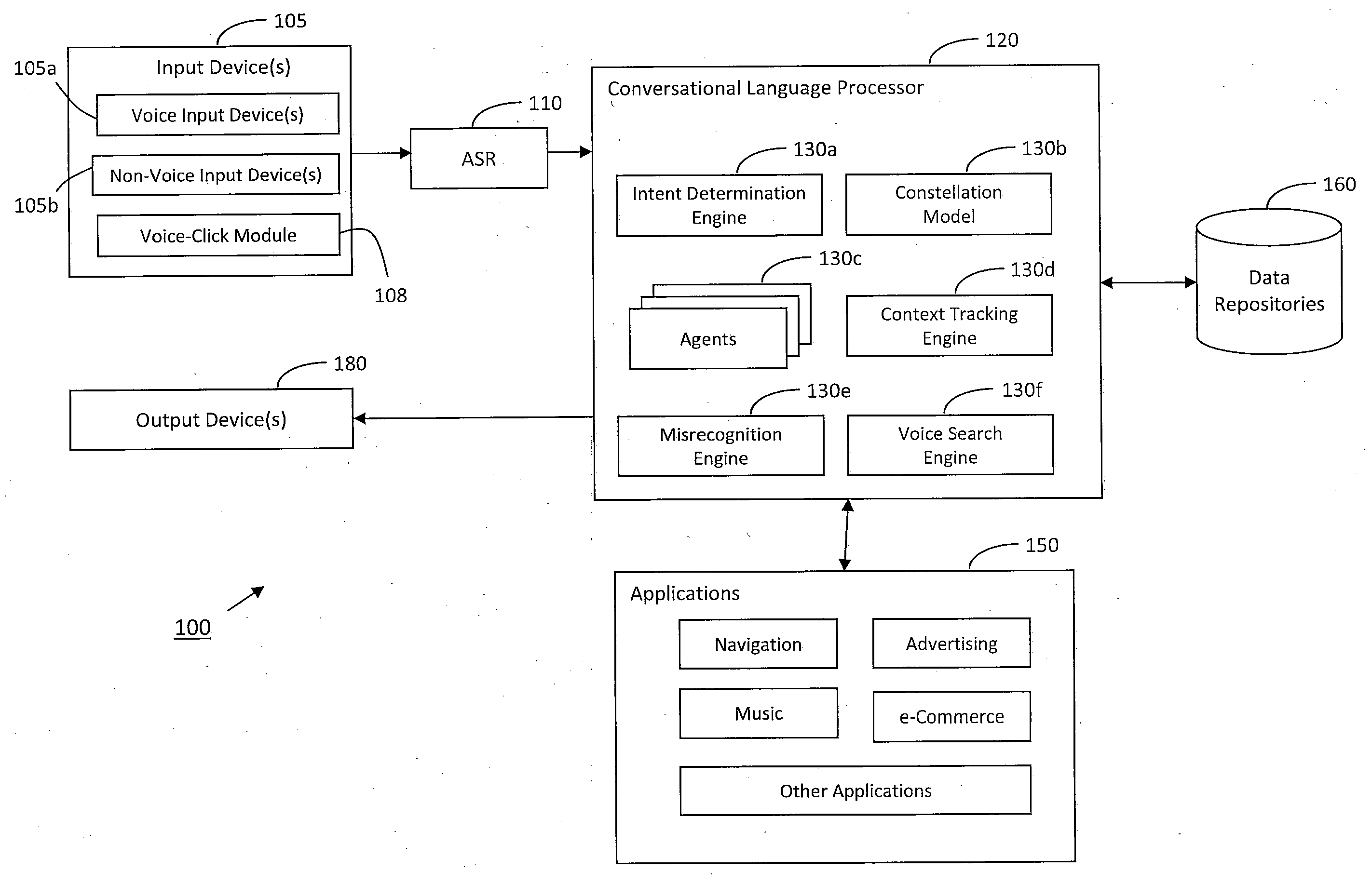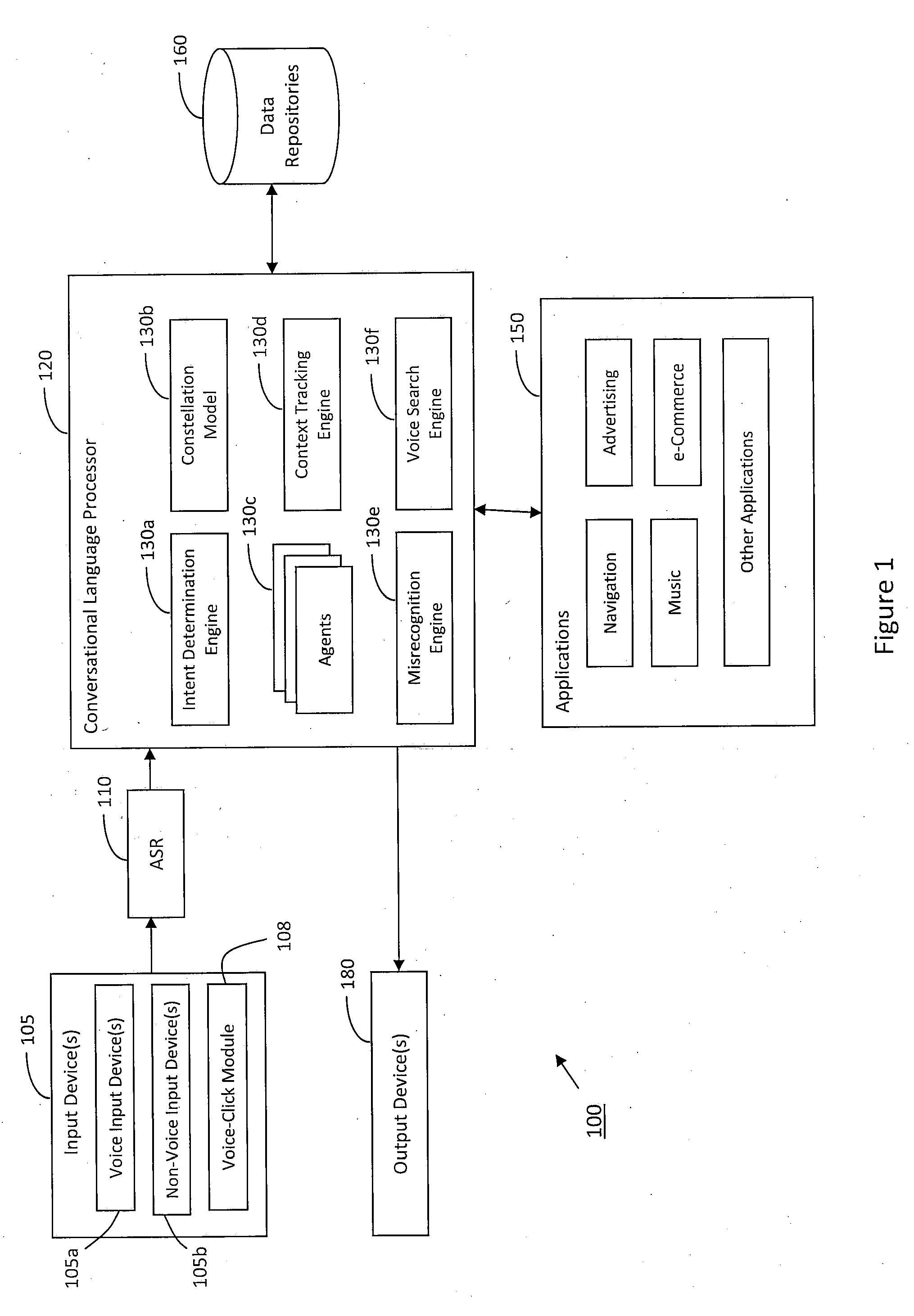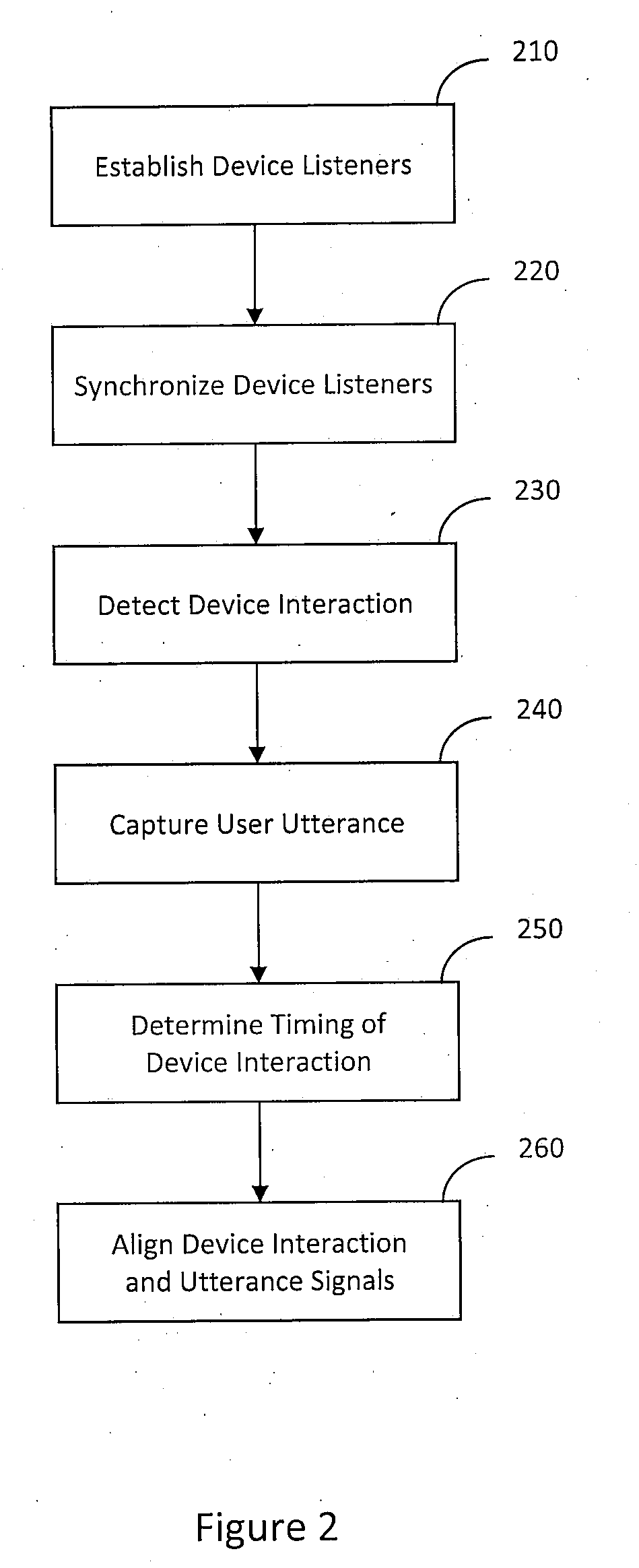System and method for processing multi-modal device interactions in a natural language voice services environment
a natural language and voice technology, applied in the field of integrated natural language voice services environment, can solve the problems of preventing users from fully exploiting the capabilities of their electronic devices, affecting the mass adoption of many technologies, and affecting the availability of services
- Summary
- Abstract
- Description
- Claims
- Application Information
AI Technical Summary
Benefits of technology
Problems solved by technology
Method used
Image
Examples
Embodiment Construction
[0017]According to various aspects of the invention, FIG. 1 illustrates a block diagram of an exemplary system 100 for processing multi-modal device interactions in a natural language voice services environment. As will be apparent from the further description to be provided herein, the system 100 illustrated in FIG. 1 may include an input device 105, or a combination of input devices 105, which enable users to interact with the system 100 in a multi-modal manner. In particular, the system 100 may include various natural language processing components, including at least a voice-click module 108, which can collectively process a user's multi-modal interactions with one or more input devices 105. For example, in one implementation, the input devices 105 may include any suitable combination of at least one voice input device 105a (e.g., a microphone) and at least one non-voice input device 105b (e.g., a mouse, touch-screen display, wheel selector, etc.). As such, the input devices 105...
PUM
 Login to View More
Login to View More Abstract
Description
Claims
Application Information
 Login to View More
Login to View More - R&D
- Intellectual Property
- Life Sciences
- Materials
- Tech Scout
- Unparalleled Data Quality
- Higher Quality Content
- 60% Fewer Hallucinations
Browse by: Latest US Patents, China's latest patents, Technical Efficacy Thesaurus, Application Domain, Technology Topic, Popular Technical Reports.
© 2025 PatSnap. All rights reserved.Legal|Privacy policy|Modern Slavery Act Transparency Statement|Sitemap|About US| Contact US: help@patsnap.com



